Advertisements
Advertisements
प्रश्न
Mention, if the following statement is True or False
Cochlea of the ear is concerned with the sense of balance.
विकल्प
True
False
उत्तर
False
Correct Statement: Cochlea of the ear is concerned with the sense of hearing.
APPEARS IN
संबंधित प्रश्न
State the exact location of the Ciliary body
Given below is a diagram depicting a defect of the human eye, study the same and then answer the questions that follow:
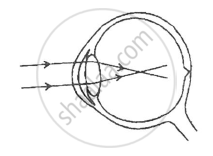
(i) Name the defect shown in the diagram.
(ii) What are the two possible that cause this defect?
(iii) Name the type of lens used to correct this defect.
(iv) With the help of a diagram show how the defect shown above is rectified using a suitable lens.
The ear ossicle which is attached to the tympanum.
Note the relationship between the first two words and suggest the suitable word for the fourth place.
sound : ear drum :: Dynamic balance : ……
State whether the following statements are true (T) or false (F). If false, correct them by changing any one single word in each.
Deafness is caused due to rupturing of the pinna.
Where is the oval window located? Briefly mention its function.
Mention the exact location of the following :
Incus
Choose the correct answer.
Canal joining middle ear to pharynx ___________
The figure below is the sectional view of a part of the skull showing a sense organ:
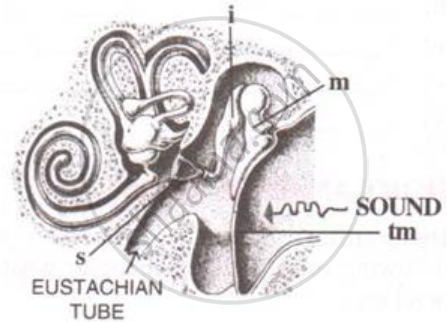
What are the parts labeled 'm', 'i' and 's'? What do these parts constitute collectively?
Given below is a diagram of a part of the human ear. Study the same and answer the question that follow:
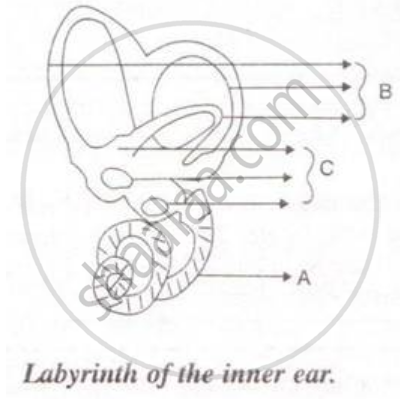
Name the parts labeled A, B and C in the diagram.
Draw a labeled diagram of the inner ear. Name the part of the inner ear that is responsible for static balance in human beings.
Given below is the diagram of the human ear. Study the diagram and then answer the questions that follow:

(i) What role does the eardrum play in hearing?
(ii) What common term is given to the parts labeled A, B, and E?
(iii) Would there be any difference if these three parts mentioned in (ii) above were replaced by one by one? Why?
(iv) Give the biological term for the parts labeled C and D.
(v) Name the fluid which fills the parts mentioned in (iv) above.
(vi) State the functions of the ear.
State the Location:
Semicircular canals
In the inner ear, the pressure variations are turned into electrical signals by the ______.
State the functions of the following:
Auditory nerve
With reference to human ear answer the question that follow:
Name the part of the ear associated with dynamic balance.
- Draw a neat and well labelled diagram of the membranous labyrinth found in the inner ear.
- Based on the diagram drawn above in (i), give a suitable term for each of the following descriptions:
- The structure responsible for hearing.
- The sensory cells that help in hearing.
- The membrane-covered opening that connects the middle ear to inner ear.
- The nerves that carry impulses from the ear to the brain.
- The tube which equalises the air pressure on either side of the ear drum.
Given below is the diagram of a part of the human ear. Study the same and answer the questions that follow:
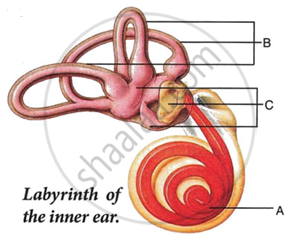 |
- Give the collective biological term for Malleus, locus and Stapes.
- Name the parts labelled A, B and C in the diagram.
- State the functions of the parts labelled 'A' and 'B'.
- Name the audio receptor region present in the part labelled 'A'.
The figure given below shows the principal parts of a human ear. Study the diagram and answer the following questions.
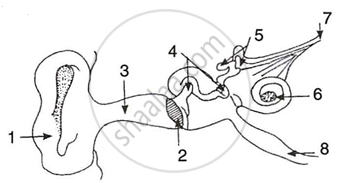 |
- Label the parts 1 to 8.
- State the role of parts 6, 7 and 8.
- Why is it harmful to use a sharp object to remove ear wax? Mention the number and name of the part involved.
